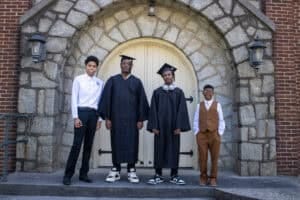To Include or Not to Include, That Is the Question!

UPDATE: This post was originally written in 2013; it is now 2025—some 12 years later. My opinions have changed or expanded to better express it. In order to appreciate my current position on the topic, it’s better to understand my previous opinion. Start reading below, and my new position follows:
As someone who has lived with the stigma of being labeled a student with a learning disability and the unique experience of having the honor to teach students with learning disabilities, I think I can share with you why inclusion is extremely important and why it’s not always about academic ability.
Inclusion, according to Webster, is to be considered as a part of a whole. The objective of inclusive education is to have students with disabilities (many with various levels of academic ability) included in the learning environment in the general education classroom alongside their non-disabled peers.
The purpose of school is to educate and teach students to eventually be able to participate in greater society as productive members (at least that’s what I would like to think).
School is the place where students begin to refine the roles they will eventually play in their community as adults. We can’t expect students with disabilities to learn and practice these roles separate from their peers and then later be able to assimilate into society with a smooth transition.
Believe it or not, I was in self-contained classes full time for 3 years. The only time I was able to be with my friends was during PE and lunch the first year I was in the program.
The next two years, as a middle school student, it was only during PE and maybe some electives like art or music. Even my homeroom was comprised of only students with disabilities.
Although I was with non-disabled students for lunch, they were not my same-grade peers. They were students of an entirely different grade.
The same program that did wonders to teach me to compensate for my learning differences did a number on my self-esteem. Some of the pain associated with being labeled “special” could have been avoided with making a concerted effort…inclusion.
Although I am an advocate for inclusion, I think we must be careful not to use full inclusion as a one-size-fits-all approach. This type of tunnel vision in itself causes frustration for many students and teachers.
I believe self-contained classes and the resource room have their place and should not be overshadowed by the newer phenomenon of full inclusion for every student.
When I reflect on my own experience, I feel sorry for the little girl who was trapped in the self-contained classroom. But I also feel sorry for students who are trapped in the general education room, and there are many.
It seems like we are always at one end of the spectrum or the other. We need to find the middle ground.
What administrators must remember and act on is that inclusion can function on many levels. This can range from students with disabilities joining the general education classroom for part of the day, depending on the type and severity of the disability, to full inclusion, where all students are taught in the same class.
Certain factors must be considered in the implementation of a fully inclusive program. These factors include, but are not limited to, social integration, curricular expectations, staff development, and related services.
The truth is that students are labeled when removed from the regular classroom by both teachers and students. But the same is true for students who are in full inclusion. Name-calling, stereotypes, and perceptions are other social issues that these children have to deal with in both inclusive and self-contained settings.
We just have to take greater care to recommend appropriate settings for students on an individual basis. Parents and students themselves must have greater input.
At the end of the day, students who benefit academically and socially from the education they receive in general education should be included in these settings.
The general education classroom can meet the needs of the vast majority of students with learning disabilities. However, this is not true for all.
Some students will receive greater benefits from placement other than full inclusion education settings, and some just may feel more comfortable in a smaller setting. The needs of the student should drive either placement.
UPDATE: When I first wrote this article, I argued that both inclusion and self-contained settings had their place, depending on the student and their needs. I still believe that, but my perspective has grown. Now, with the rise of microschools, I see a third option—one that blends the best of both worlds. Microschools designed for students with learning differences offer an environment that is neither isolating like a traditional self-contained classroom nor overwhelming like full inclusion can sometimes be. Instead, they create intentional, small communities where students are known, supported, and challenged at their level. The flexibility of microschools allows for tailored instruction, strong relationships, and an atmosphere that values differences as strengths rather than deficits. In many cases, I believe this model is better suited to help students with learning differences thrive both academically and socially.
It has been in this environment that I’ve helped students achieve big gains after having been behind grade level by three and four years. At Triumph, we intentionally created an environment where students learned about the difference without shame. They were the norm, so they all were “normal.” Students’ self-esteem reached new heights, and they risked more and were willing to fail and learn from their mistakes.
Every time I reflect on my students’ success, I know it was because of the work done in our microschool.


0 Comments